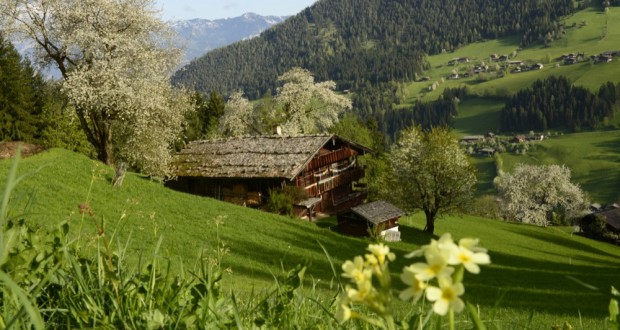When the village’s Tirolean brass band strikes up – with punctuality and regularity – Alpbach’s hills are veritably alive with the sound of music.
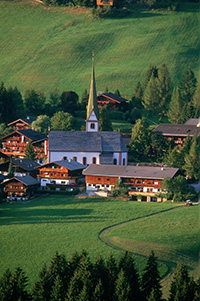
Alpbach-village-church
And there’ll be a song in your heart all the while you abide in Alpbach, voted Austria’s most beautiful village. And beauty, in this 20km-long valley, is at once both human and monumental in proportion.
You see it in the small-scale charm of authentic architecture, festooned with flowers, and in the glories of a topography that encompasses soaring summits, shimmering meadows, gothic cliffs, gorges and sylvan woods.
The terrain between Reith in Alpbachtal up to Inneralpbach is distilled mountain magic, and an area that has only been exposed to the modern world for four generations.
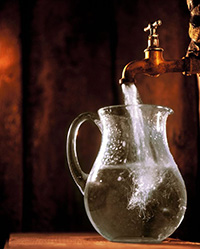
Alpbach’s purest water
Until 1926, when the road was built, Alpbach was cut off from industrialising Europe. An influx of visitors followed, but a far-sighted local council, realising the risk, passed an edict that all future building should be traditional Alpine in technique and appearance.
Today Alpbach, and the wider Alpbachtal region, caters for 22,000 summer visitors a year, a comfortable number, but nowhere close to mass tourism. You need a week to appreciate the variety and scope of the walks and hill climbs on offer, but stay longer if you can; it would be hard to cover the same ground twice.
A comprehensive spread of accommodation is available, from simple guest-houses to four-star hotels. The Alpbachtal Seenland Card allows free use of the frequent bus service and mountain lifts, and free admission to several attractions. Should you wish simply to explore the immediate area around the village, use it to hop on the Wiedersbergerhorn gondola, and open up near-limitless gentle meadow and woodland land rambles and the pathways to the higher slopes.
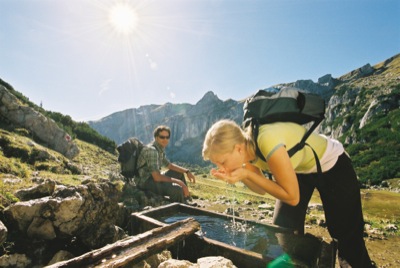
Thirsty work
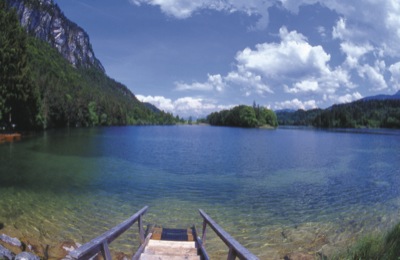
Reintalersee lake in Kramsach_
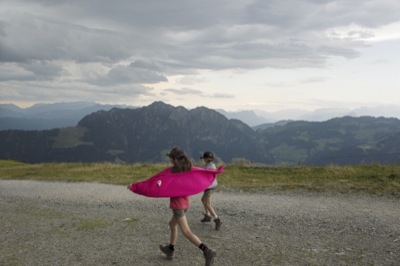
Family walking trail in Alpbach
You can, of course, climb ev’ry mountain, but which one? There are six principal peaks: Großer Galtenberg (2,425m), Sonnenjoch (2,287m) Standkopf (2,228m), Wiedersberger Horn (2,128 m), Gratlspitze (1,899m) and Schatzberg (1,898m).
The Großer Galtenberg is highest, but the Schatzberg tops it for sheer variety. Schatzberg translates as Treasure Mountain, so named after the rich lodes of silver and copper mined for 1,000 years. This vast, dome-like playground at the head of the valley is a treasury of rambles and climbs, not least in the man-made, as well as natural, rock faces. From here you can stride out across the nearby Rofan plateau, with its soaring cliffs and wildflower-spangled pastures filled with orchids, primulas, alpine roses, orchids and, of course, edelweiss.
For family walks, Alpbachtal’s three principal gorges are enchanting and breathtaking. The Kundl gorge, south of Alpbach, leading into the Wildschonau valley to the east, provides the longest excursion at 7.5km. The mindboggling rock formations of the Kaiser gorge, west of Alpbach, will etch themselves on your memory, and a little further out to the north,? the Tiefenbach gorge is perhaps the most spectacular, with elevated viewing points above perpendicular plunges to the river below, itself a testing challenge to white-water rafters.
Alpbach itself, home to 2,500 souls, is pure picture-postcard Tirol, replete with overhanging eaves and bloom-bedecked balconies. Travel back in time at the Vorder-Unterberg farming museum, home to more than 800 pieces of original furniture and farm items from the 17th century.
When you’ve finished a day’s hiking, plus a bit of shopping, unwind in a homely cafe or one of Alpbach’s alluring restaurants,or park yourself on a wooden bench and soak up the peace or with luck, the village band will serenade you.
And then make your plans to return. www.alpbachtal.com
 Good Ski Guide The Worlds Most Loved Ski Guide
Good Ski Guide The Worlds Most Loved Ski Guide
